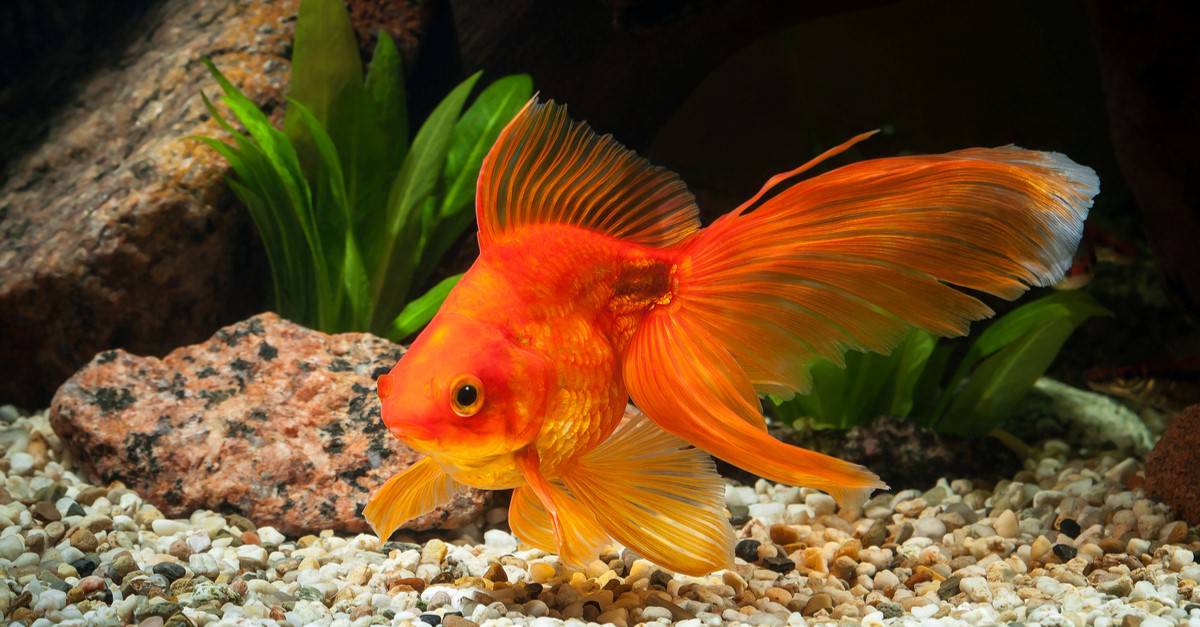Fish are among the most populous and diverse creatures on our planet. From fishing boats to fish tanks, they are essential parts of our world. With such variation, however, the question of how fish reproduce can become complicated. How do fish mate? Are the births live? How many young are born at once? And how long are fish pregnant? Read on for the answers to these questions and more!
Types of Fish
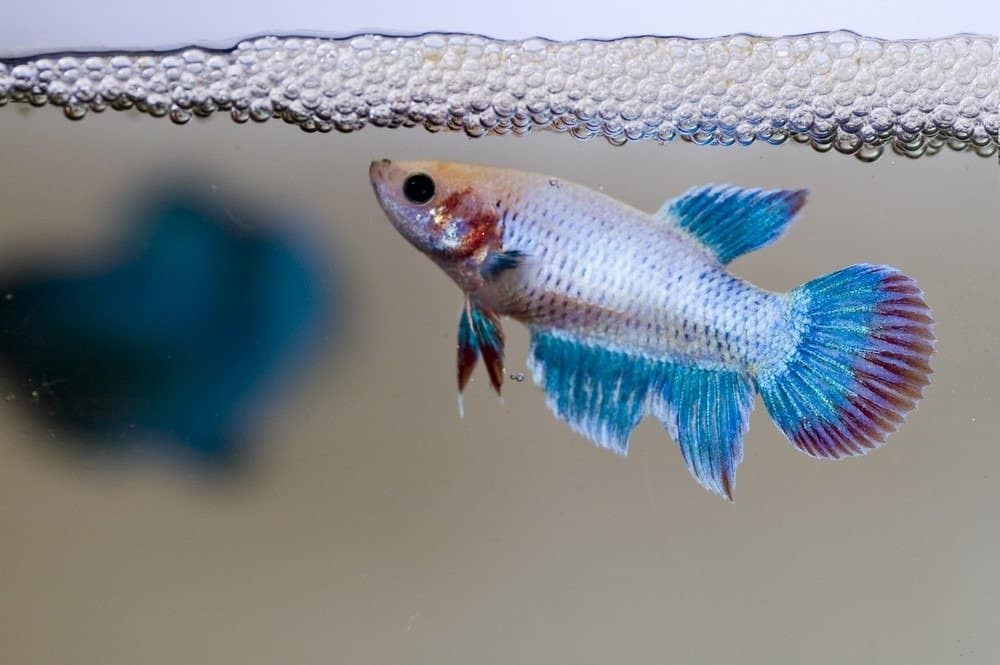
Fish are cold-blooded aquatic vertebrates with gills, swim bladder, and paired fins.
©mnoor/Shutterstock.com
A fish is a cold-blooded aquatic vertebrate with gills, swim bladder, and paired fins. Though this description may seem specific, the size, color, and habits of fish actually vary drastically. Species range from the tiniest of the anglerfish to the massive whale shark, from vicious predators to gentle giants.
There are over 33,000 fish species in the world, with trillions of individual fish. As scientists continue to explore the waters of our world, they discover more species.
Fish belong to 3 superclasses: bony fish (Osteichthyes), cartilaginous fishes (Chondrichthyes), and jawless fish (Agnatha).
Bony Fish
As the name suggests, bony fish have skeletons made of bone. They also have paired nostrils as well as paired fins, scales, and one pair of gill slits. Their bodies are usually long and tapered. Bony fish can be further separated into ray-finned and lobe-finned fish.
Examples are:
- Bass
- Trout
- Goldfish
- Herring
- Codfish
Cartilaginous Fish
Cartilaginous fish have skeletons made of cartilage instead of bone. They have paired nostrils, paired fins, scales, and hearts with 2 chambers. The number of gill slits may vary from species to species. This group comprises sharks, skates, and rays.
Examples are:
- Great white sharks
- Catsharks
- Pacific white skates
- Manta rays
- Stingrays
Jawless Fish
Jawless or round-mouth fish do not have jaws in the traditional sense. Rather, they have gaping, boneless mouths that rely on suction to trap their prey. Rows of teeth allow them to feed. They lack scales, paired fins, and stomachs but have notochords and pineal eyes. Their bodies are conical and elongated, resembling that of an eel. Jawless fish include lampreys and hagfish.
Examples are:
- Sea lamprey
- Northern lamprey
- Northern brook lamprey
- Atlantic hagfish
- Broadgilled hagfish
Fish Appearance and Size

Fish come in every conceivable colour and pattern of colours.
©iStock.com/FtLaudGirl
Fish come in every conceivable colour and pattern of colours. Many, like the orange-and-white-striped clownfish, are vibrant and flashy. Others are grey, brown, or black, preferring to blend in with sand and seabeds. Body shape varies as well. Swordfish are slim and pointed while rays have flat, winglike bodies. Others are round or eel-like.
The smallest fish on record was a type of anglerfish with the scientific name Photocorynus spiniceps. It measured only 6.2 millimetres in length. The largest fish in the world is the whale shark. The biggest specimen measured 41.5 feet in length with a weight of 47,000 pounds.
Fish Diet and Predators
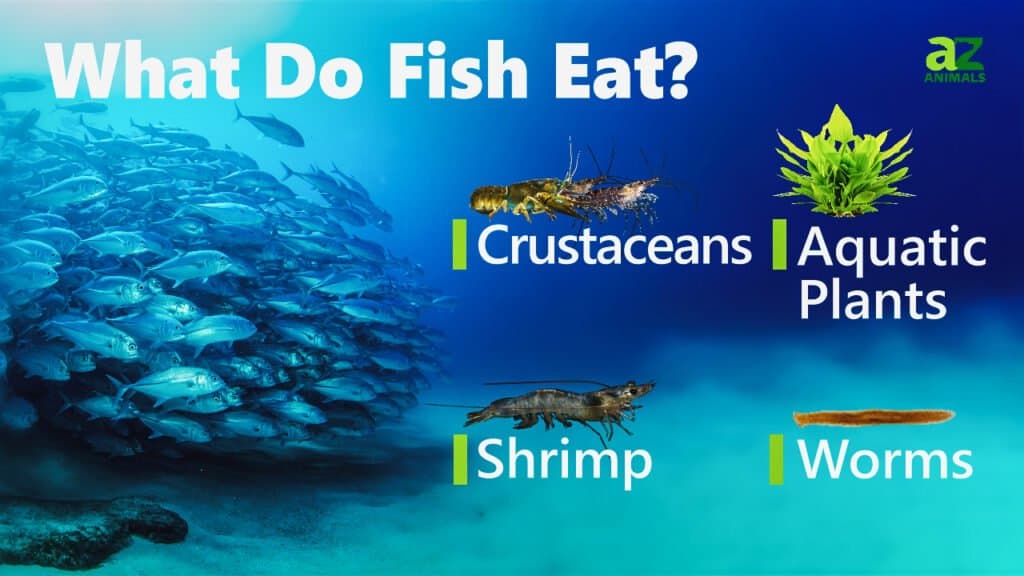
Some fish rely mostly on plant matter like algae or seaweed for survival. Other fish, like sharks, are keen predators and eat other fish like tuna, mackerel, or cod. Dolphins, porpoises, seals, sea lions, and whale carcasses may also be consumed. Other fish are filter feeders, consuming large quantities of tiny fish like krill or plankton.
Sharks, seals, sea lions, whales, crocodiles, birds, and humans all prey on various species of fish.
Fish Habitat
Fish live in both fresh and salt water. Common freshwater habitats include rivers, lakes, and swamps. Fish in these ecosystems can grow to be sizeable, though typically not as large as their saltwater companions.
Saltwater fish live in the shallows, reefs, on the seafloor, in the deep sea, trenches, and virtually anywhere else in the ocean.
Fish Lifespan
As with everything else, fish lifespan varies greatly. Many aquariums and freshwater fish live between 1-10 years. Others live up to 25 or 50 years. The rougheye rockfish can live over 200 years under the right conditions. The oldest fish in the world was a female Greenland shark who lived for 392 years old.
How Long Are Fish Pregnant?
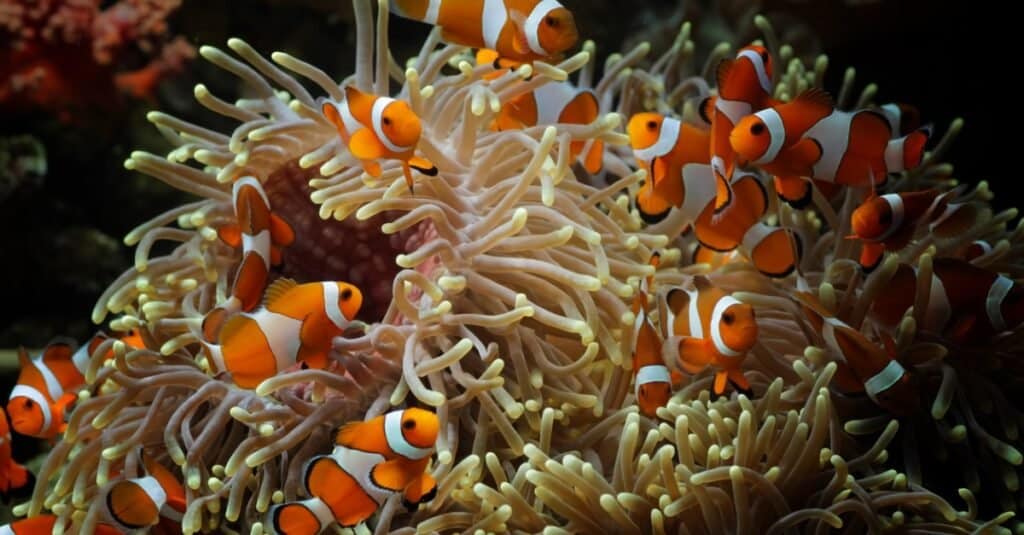
Fish pregnancy can last anywhere from 3 weeks to 3.5 years depending on the species.
©iStock.com/agus fitriyanto
Fish pregnancies usually last between 3 weeks and 10 months. This huge range is due to the differences between various fish species. Aquarium fish like goldfish or guppies are at the lower end of the spectrum. On the other end, the basking shark and frilled shark have gestation periods of 3 and 3.5 years, respectively.
Technically, fish are not considered pregnant if they lay eggs. Scientists only refer to pregnancy among fish that give birth to live fry (baby fish).
Types of Fish Reproduction
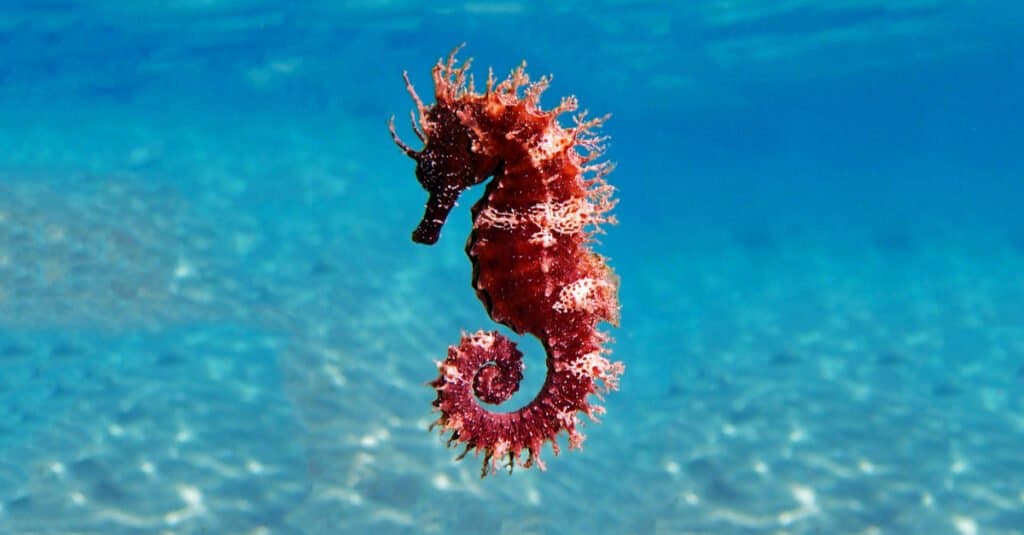
In some species of fish, like seahorses, the male gives birth, not the female.
©Vojce/Shutterstock.com
There are 5 different kinds of fish reproduction, divided into egg-bearing (3 types) and live birth (2 types).
Ovuliparity
This is an example of external fertilization in fish. Both the male and female fish release their gametes, or sperm and eggs, into the water. The sperm and eggs meet, after which the sperm penetrates the ova. The embryos then develop externally, relying on the nutritious egg yolk to survive.
Oviparity
Oviparity begins with internal fertilization. The male inserts sperm into the female, fertilizing the eggs inside her body. She then lays the eggs. They develop externally, as in ovuliparity, feeding on the nutritious yolk.
Examples of ovuliparous and oviparous species are trout, char, and salmon.
Ovoviviparity
Also known as aplacental viviparity, this type of reproduction begins with internal fertilization. Although it technically falls within the egg-bearing category, it also involves a form of live birth. Once the male has donated his sperm, the mother keeps the eggs inside her until they hatch. She does not feed them herself; they rely on the yolks for nutrition. They are born as larva.
Examples of ovoviviparous species are angelsharks, stingrays, and tiger sharks.
Histotrophic Viviparity
Histotrophic means “tissue-eating.” This is the first of 2 types of viviparity. It involves internal fertilization, after which the embryos develop inside the mother’s oviducts. They feed on her unfertilized eggs or unborn embryos. The births are live.
Hemotrophic Viviparity
Hemotrophic means “blood-eating.” Fertilization is internal, and the mother directly supplies the embryos with nutrition, usually in the form of placenta. As with the first type of viviparity, the births are live.
Examples of viviparous species include marine mammals like whales, many types of sharks, and some other fish species.
How Can You Tell If a Fish is Pregnant?
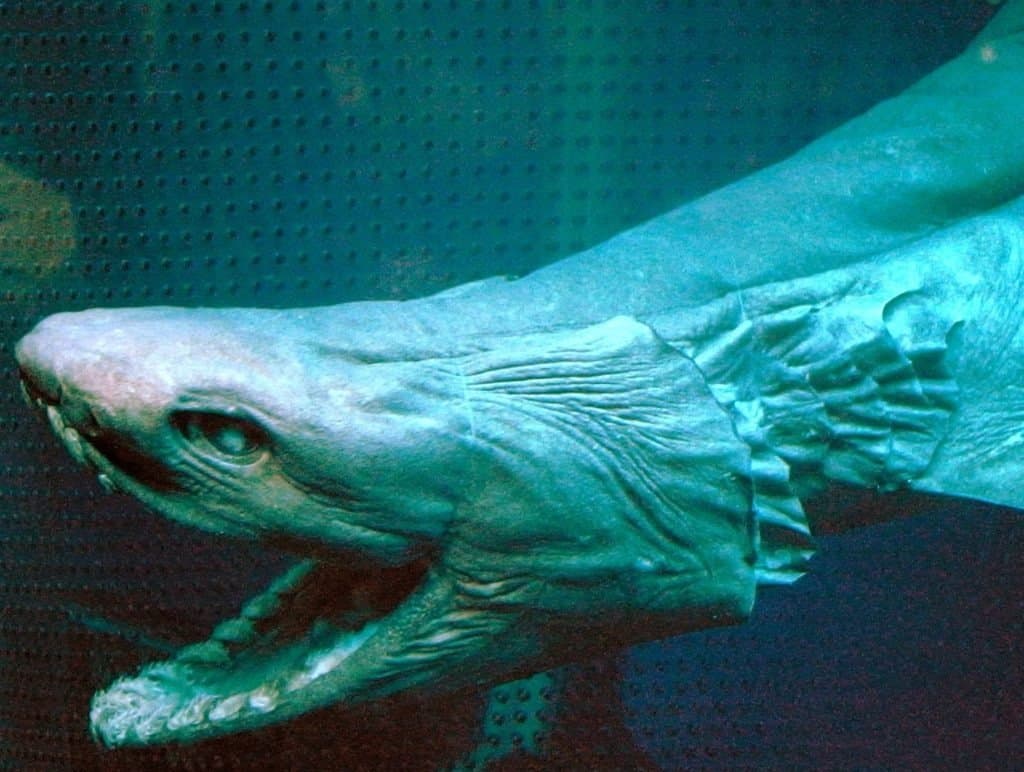
The frilled shark’s gestation period lasts as long as 3.5 years.
As the gestation period wears on, the abdomen of a pregnant fish will expand until it bulges noticeably. A “gravid spot” will develop on the abdomens of some fish as the pregnancy progresses; this will be either red or black. Pregnant fish also slow down considerably, acting lethargic and resting often.
In fish with long gestation periods, like sharks, it may be difficult to notice the pregnancy for many months. In these cases, an ultrasound is the best bet for confirmation.
How Often Can a Fish Get Pregnant?
Many species of fish can get pregnant and give birth every 4-8 weeks. Fish like sharks take much longer to give birth, and so they may not produce offspring more often than once or twice every few years.
How Many Offspring Can a Fish Give Birth To?
Many aquarium fish like guppies give birth to between 10-40 fry at once. Some shark species typically give birth to only one young fish at a time. Other fish, like seahorses, give birth to 2,000 offspring at a time – and it’s the males who give birth. One strange-looking fish called the mola releases 300 million eggs at once!
With the vast numbers of fish in the sea, it’s no wonder their reproductive methods exist in such intricate variety.
Thank you for reading! Have some feedback for us? Contact the AZ Animals editorial team.

